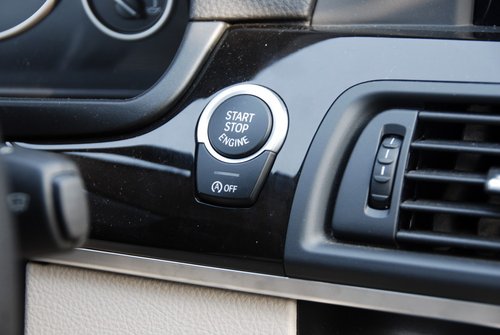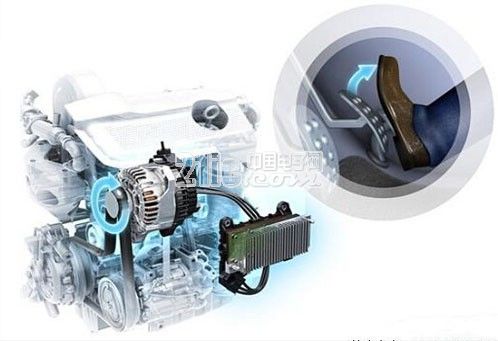Full analysis of engine automatic start and stop technology
At present, the phenomenon of traffic jams causing vehicles to block into a pot of porridge sometimes occurs, ranging from ten minutes to half an hour or more. When the car is at a standstill, the engine is in an idle state, and the resulting pollution is much more powerful than when driving normally. How to better reduce the pollution and fuel economy of the car in the case of blockage? Therefore, a technology for energy-saving and emission reduction designed for engine idling - the start-stop system began to rise quietly in the 1970s. This article refers to the address: http:// To date, in response to increasingly stringent fuel emission regulations, OEMs have begun to carry out large-scale engine start-stop technology and use this technology as a major selling point. How does the start-stop system exert its fuel-saving skills? What developments have the technology been experienced since its birth? This article will start with the development history, working principle and application status of the engine start-stop technology, and share the start and stop with the industry. The past and present of technology. What is automatic start and stop technology? The STOP&START system, referred to as STT, is a system that automatically controls engine stall and ignition. When the vehicle is temporarily stopped during driving (for example, waiting for a red light), the engine is always braked (usually more than 2 seconds), the engine can automatically turn off; when the brake is released or the throttle is depressed (or the steering wheel is turned, cut S, M file) When the engine is started, the engine starts automatically. The automatic start-stop system minimizes engine idle idle time to reduce unnecessary fuel consumption, reduce emissions and improve fuel economy. History of automatic start-stop technology The idea of ​​engine start-stop technology has been around since the 1930s, and the application of the car dates back to the 1970s. At that time, Toyota had carried out a practical test of similar technology on the Crown sedan. When the vehicle stopped for 1.5 seconds, the engine would automatically cut off the oil and extinguish the flame. This can be said to be the prototype of the automatic start and stop technology of the engine. But until around 2006, due to increasingly stringent environmental regulations, automatic start-stop technology began to spread in the car. Japanese As early as 1970, Toyota had been involved in start-stop technology. At that time, an attempt was made to install an electronic device on the Toyota Crown car to shut down the engine after the car was stationary for 1.5 seconds. The test found that in the busy traffic in Tokyo, the use of this new technology can increase the fuel economy by 10%. In addition to Toyota, Mazda also developed the i-Stop system, which will determine the first cylinder to be operated when it is restarted at a stationary idle state. The piston of the cylinder will stop at the proper position and complete the scavenging stroke in the cylinder. When the system judges that it will be restarted, the injected fuel is quickly ignited and burned, and the starter motor is driven at the same time. The startup process took about 0.35 seconds and was fairly smooth. German In 1980, the start-stop system began to be equipped on Volkswagen's second-generation Polo production model. Subsequently, in 1994, the third-generation Volkswagen Golf, Lupo (3L model), and the 1999 Audi A2 (3L model) were equipped with this technology, but the sales of these models were not ideal due to the high price. BMW will start and stop technology applications for many years, including the mini series after 2008. BMW has been working to reduce the loss of engine power. They use Bosch's enhanced starter motor to withstand more starts in a frequently closed and started environment than a typical starter motor. Law In 2006, the Citroen Company of PSA Group of France developed an idling stop system called “start-stopâ€, which was installed on Citroen C2 and Citroen C3. The system combines the company's sensodrive automatic transmission with an electronically controlled ISG reversible generator (ISG integrates a starter motor and generator, developed by Valeo and Japan Denso). The system is also equipped with the Peugeot 3008 e-HDi, which was redesigned in 2011. With a 1.6-liter diesel engine and a brake energy recovery system, it can save up to 15% in fuel consumption. How does the automatic start-stop technology work? The general principle of automatic start and stop is to set up a battery and a starter on the vehicle. The battery is charged with energy by an energy recovery system or a generator. When the vehicle stops because of congestion or intersection. The driver depresses the brake pedal and stops the vehicle. At this time, the Start/Stop system automatically detects that the engine is idling and there is no gear; the wheel speed sensor of the anti-locking system shows zero; the electronic battery sensor shows enough energy for the next start. After satisfying these three conditions, the engine automatically stops rotating. When the signal light turns green, the driver depresses the clutch and can then start the "start stop" and start the engine quickly. The driver is geared, the throttle is stepped on, and the vehicle starts up quickly. With the support of efficient battery technology and the corresponding engine management program, the start-stop system works well at lower temperatures and can be activated with a short warm-up process. Automatic start-stop system application status At present, there are many models on the market equipped with automatic start-stop system for engines. There are many models for automatic start-stop technology in European vehicles, such as Audi (from A1 to A8L, Q3/Q5/Q7), Mercedes-Benz (E-class, S-class, etc.). , BMW (1 series to 7 series, X1/X3), Volvo (almost all new cars), Porsche (almost all new cars). According to foreign media reports, Ford Motor plans to implement 70% of its models in 2017 with an automatic start-stop system. At present, the production and sales of China's automobiles are maintaining a momentum of rapid growth. Sun Guozhong, vice president of China's Bosch Starter and Motor Division, said that 40% of European light vehicles used a start-stop system in 2013, and the ratio is expected to increase to 90% by 2019; the Chinese market will follow Europe in this area. The pace, he predicted: "In 2019, the annual sales volume of China's auto market will reach 30 million, of which 30% will be equipped with start-stop system. At that time, one out of every three vehicles will be equipped with a start-stop system." Guangzhou Ehang Electronic Co., Ltd. , https://www.ehangmobile.com
